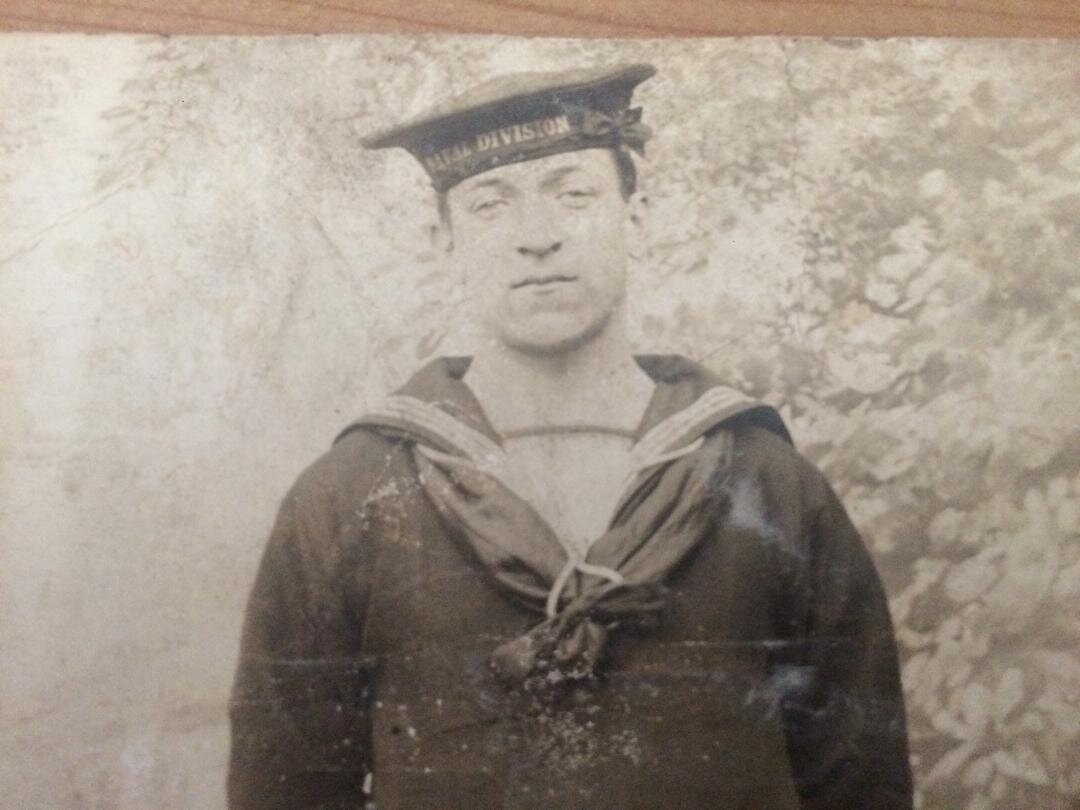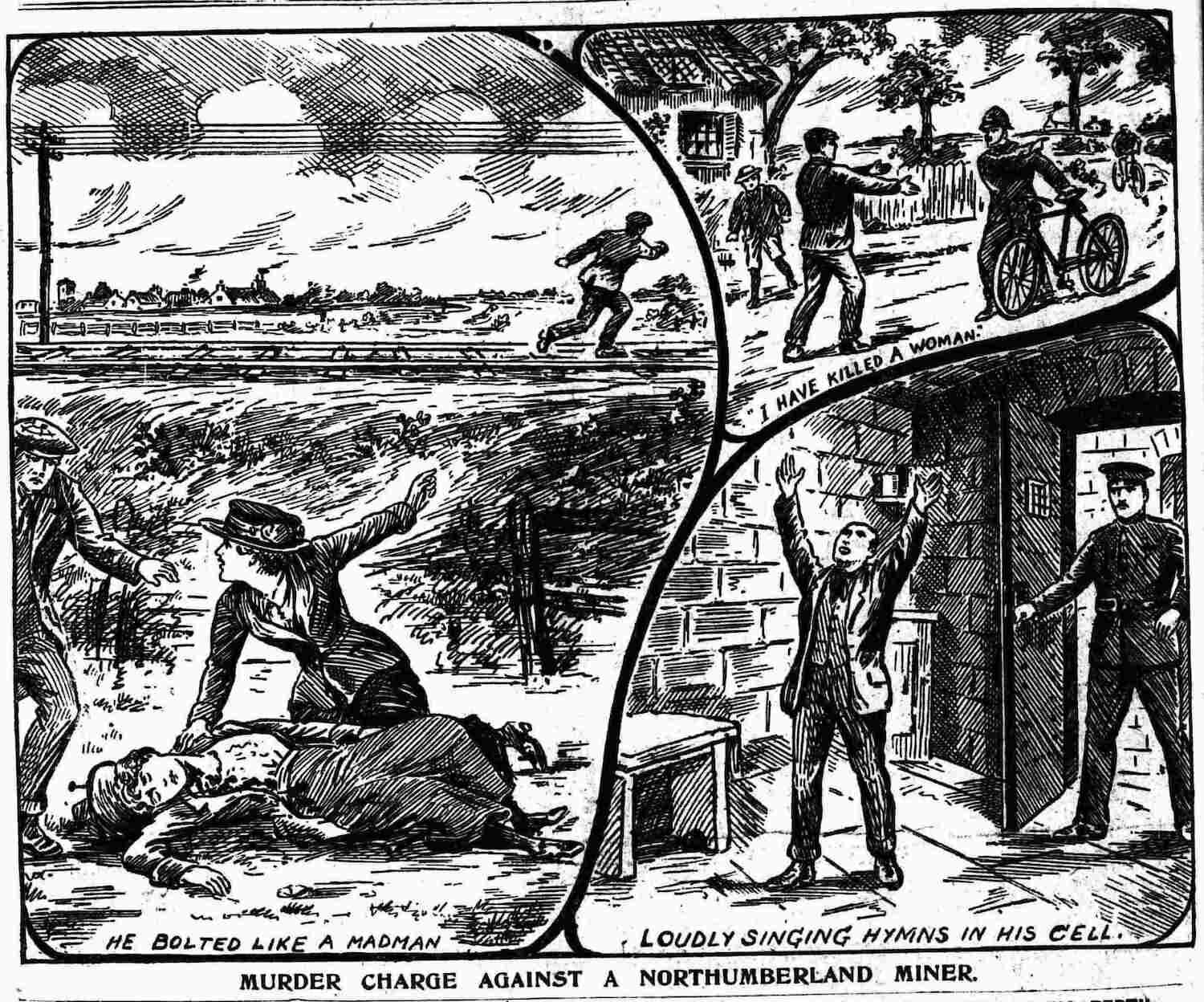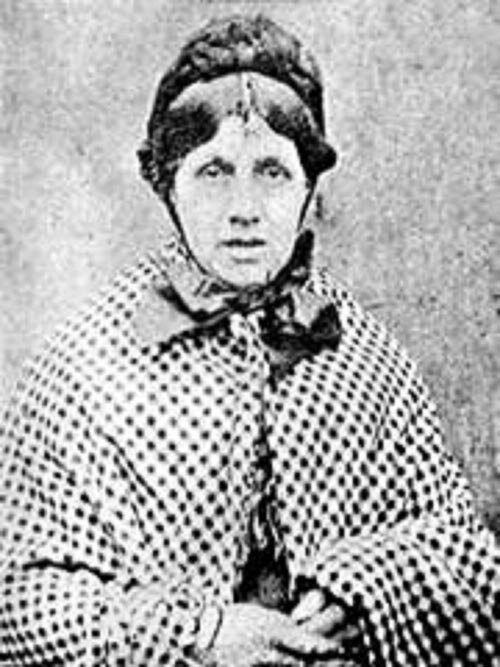
Memories
As part of this prison project we reached out to the public to gather any memories or information they had about the gaol. We received some fascinating recollections from people and include them here unedited. If you have any memories or stories attached to the gaol itself then we would love to hear them, so please get in contact with us.
Marie McNichol
My grandfather John (Jack) Level worked on demolishing and excavating the bodies of executed prisoners in the early 1920s. He worked for a company called Purdie, Lumsden & Co. who had the contract to demolish the prison; he worked on Derrick cranes. Whilst excavating the bodies of the prisoners hung within the prison, it was found that there was a body that shouldn't have been there. The body was wrapped in oilskins like that of a sailor and was placed facing the correct way (as in the Christian burial way, the prisoners were all buried the opposite way). The demolition was halted while police were brought in and an investigation begun. The police never discovered who the body was, only that it was male and why it was buried there and so it remains, so to speak, unsolved.
The delay in the demolition of the area was severe and Purdie, Lumsden & Co. were not at all happy and therefore when a couple of weeks later and not far from the prison a large iron ring was found he was fuming, my grandfather, Jack, asked if he could open it with his Derrick crane. The person in charge eventually agreed and the 'trap door' was opened with a whoosh of air, like a vacuum, climbing down a ladder with a torch they discovered what could only be described as a torture chamber. There were shackles on the walls, a crank and a wheel which must have been used by the prisoners like a hamster wheel, which was well worn, one side of the 'step' being thick and the other worn away. The boss demanded the 'trap door' was shut and that no one was to mention it as he didn't want the job delayed any further presumably by archaeologists being called in and so it was built upon (still being there) where the old fire station is on Pilgrim Street. I know that three photographs were taken of the 'torture chamber' but I don't know what happened to them I think they were owned by a man called Blacklock (first name unknown) who went down to look round the room.
Images: John (Jack) Level, courtesy of Marie McNichol.
Victoria Chilton
As a young girl around the age of 8 my granda Peter Scott Moralee would be working in his garage on his old Ariel bikes and I would be asking him about who his mam and dad were - I don’t know why i was so fascinated but I loved to know about family and ancestors at a very young age. He told me all about how he had a uncle who was the last man to be hung in prison…this gripped me! He told me he has the letters somewhere and he will get them out one day.. but he could never find them...time went on and the older I got the more i would ask for them letters and he would try again but no luck. My grandma Enid would roll her eyes at me and laugh wondering why I am so obsessed with the past. We tried to work out what his name could of been and he was sure it was William Moralee...but he would shrug and laugh and remember that the letters he sounded like a nutter and said he was clearly a “silly bugger”.
We started to visit his twin sister Pat a lot a couple of years ago and she was also very interested in who this murderer was in the family...she also was sure he was called William and heard he was a jealous sailor who saw his girlfriend having an affair with another sailor on a beach in Blyth. I started to go to my local library and start an ancestry family tree and would search for this William Moralee...then I saw it! There was a lot of articles on him but his name was Ernest Bernard Scott! Excited, I ordered his birth certificate and his mother was Annie Scott who was my granda Peter Moralee’s grandmother; it turns out Ernest was an illegitimate child and was being brought up by Annie’s parents. Annie married Joseph Moralee and had John Moralee and Isabelle Moralee.
I looked through my local library’s true crime section and found a book called Executions and Hangings in Newcastle and Morpeth by Maureen Anderson. I found Ernest’s story in there and a photo of Rebecca Quinn. I was amazed and sad at the same time because of how awful it has happened but excited because of the history. My family were so happy and excited with this all and then one day my granda’s was cleaning his house and came across my grandma’s old purse and found the letters inside. I went straight to his and we read them together and he let me keep them. It’s just always amazing for me to read and I get so emotional about what happened but glad to have this history on paper.
Image: Illustrated Police News, August 21st 1919.


Liz Sobell
I used to work as a social history curator at Beamish Museum, and I remember interviewing an 84-year-old lady whose aunt had been a student teacher at Durham University in the 1870s. The aunt remembered the day when the serial killer Mary Ann Cotton was hanged in the yard of Durham Gaol, which was overlooked by the college buildings. On that day all windows on that side of the building were shuttered and the students confined to rooms at the other end of the building.
Beamish has Mary Ann Cotton’s small basalt teapot (complete with visible deposits) in its collections. Whenever my grandmother was served with a cup of tea not made to her liking, she would shudder and say “Oh, Mary Ann Cotton!”. I didn’t know what she meant until I began to work at Beamish, but clearly Mary Ann Cotton’s crimes were still part of the folklore one hundred years later.
Image: Mary Ann Cotton. Courtesy of Wikimedia Commons.
James Cole
Here is some information regarding my great grandfather Adam Lisle who was a prison officer at Newcastle Goal between late 1860s to about 1885. He was born 1822 in North Northumberland. His family moved to Prestwick where Newcastle airport now stands around 1830. I think Adam joined the prison service during the late 1860s his name and his wife Margaret (nee Bowey) appears In the 1871 census for the gaol. Margaret dies in 1873. Adam marries again in 1874 to Margaret (nee Temple). Adam appears again in the 1881 census for the gaol as gatekeeper/prison officer. Adam and Margaret had three children all of whom I believe were born in the goal during 1876, 1877, and 1880. The 1881 census shows Margaret and the children, Adam George Lisle (my grandfather), Jane Ann Jackson Lisle, and James Temple Lisle living with her sister and brother in law in North Northumberland. By 1886 Adam has retired from the prison service and he and Margaret and the children are living in Dinnington village north of Newcastle where he opens a grocers and provision dealers shop and remains there until his death in 1903. The excellent book Victorian Villains by Barry Redfern is a fascinating insight into the life and times of Newcastle Gaol between 1871 and 1873. I often wonder when looking through the book how well my great grandfather Adam would have known the faces of the inmates.
Image: Adam Lisle listed as ‘Prison Officer’ in the 1871 Census. Image provided by James Cole.
Carole Moore
I am currently researching my family tree and have discovered that my Great Grandad, James Lynch, served time at the Gaol in 1894. I have found press cuttings about his misdemeanor but I haven’t been able to access any images or records of him at the Gaol. His story is interesting in that he was a serving policeman at the time of his arrest. He was found guilty of burgling the Duke of Gloucester public house off Westgate Road together with another policeman. They were drunk at the time, and he was on duty. I have no idea what happened to him after he was released but I do know he went to fight in the Anglo Boer War in South Africa in 1899. He served in the Imperial Hussars and had previously served in the Dragoon Guards in Belfast before relocating to Newcastle. Sadly he was killed in action on 5 November 1900. Prior to his conviction I have found several articles regarding him winning prizes at the Temperance Festival in Newcastle. There is also an article in which he bravely stopped a horse from charging into a crowd on the Town Moor by jumping from his horse and stopping it by the nostrils. It seems to me (unless there is more to uncover) that he was a good man who, for whatever reason, got drunk and committed this crime.
Mark Sherwood
You may well recognise my name Mark Sherwood as the name of the last person to be publicly executed on the Town Moor for the murder of his wife, Ann Sherwood. He is in fact a relative. As a child growing up in Newcastle my father told me the story of my namesake being the last person hung at the gallows on the Town Moor. He said this every time we passed on the way in to town and he said the crime was stealing a loaf of bread. I thought that may have been plausible at the time but he never confirmed we were related. I did some research at the local archives at Newcastle Central Library many years later and found the real reason which my father subsequently confirmed and that he was in fact a distant relative. He also told me his mother almost fainting when he and my mother decided to call me Mark as I guess this was still a taboo subject in the family at the time I was born in 1967. I've always been interested in knowing more about this and researching my family history but have not found the opportunity to give it the time and commitment I know it will need.
An additional quirk of the story is the date of Ann Sherwood's murder. 14th March is also my mother Ann's birthday which feels slightly eerie. I'm also interested to find the resting place of Mark Sherwood and not sure if that is where the 14 trees are planted when the bodies were moved at the time the Gaol site was redeveloped.
Image: Thomas Oliver’s 1830 Plan of the Town Moor, Castle Leazes and Nuns Moor.

Audio Interviews
In 1991 former Police Chief Superintendent of Northumbria Poice and local historian Barry Redfern, who had written extensively about execution and crime in Newcastle, undertook interviews with people who remembered the gaol. He bequeathed the interviews to the Tyne and Wear Museum Archives and they are available below courtesy of them. These interviews give fascinating glimpses into the lives of some of the people who lived in the immediate vicinity of Carliol Square and also include fascinating detail about the gaol itself and execution days.

